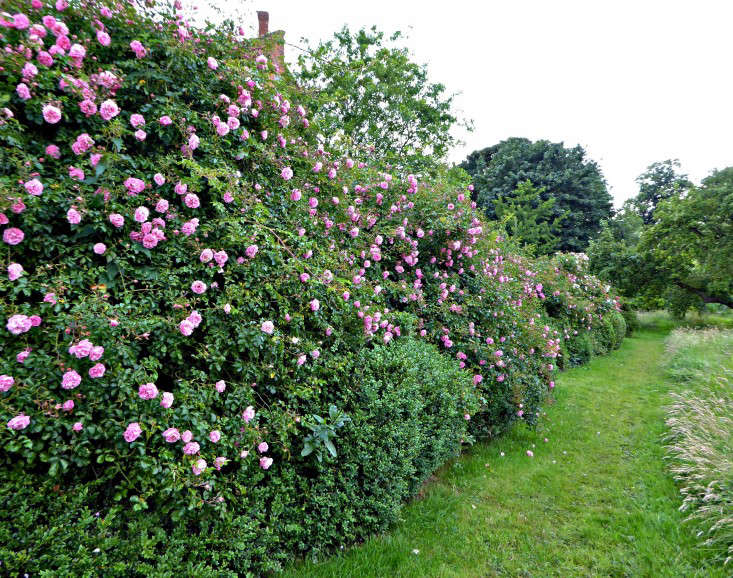Almost all gardening involves controlling and choreographing nature, but many of us are letting our gardens grow wilder and more naturalistic. At Tattenhall Hall in Cheshire, a Jacobean manor house that sits in a picturesque English village, the line between cultivation and wilderness is finely drawn.
The garden belongs to two couples—Jannie Hollins and Chris Evered, and Jen and Nick Benefield—who were frustrated gardeners living in London when they bought the Jacobean house and its four and a half acres in 1994. Moving north gave them the chance to design and nurture a garden of epic proportions complete with a vast natural pond, a nuttery, wildflower meadows, and a stunning walled garden. Today we’re visiting the wilder corners of this collaborative endeavor.
Photography by Clare Coulson.

What the couples have created, it turns out, is more akin to its equally influential neighbor, Great Dixter. Like all gardens that seem to be tipping tantalizingly into wilderness, it’s an intoxicating, magical space—and a lot of work. Both couples work on the gardens with the help of part-time volunteers too. The house meanwhile is also shared between them.
Wildly romantic roses are used in abundance; here the old outbuildings, which have been repurposed as workshops and art studios, are beautifully framed with lush ramblers. Jannie had planted this one to match a deep pink rose inherited from her mother but instead it bloomed blush pink.

The vast pond was dug out and filled from the natural waterways. The native reeds not only add a lush border but also have very pretty flowers, similar to an allium.

The bank was then covered with weed suppressing membrane and smothered with rambling roses—possibly ‘Flowering Carpet’. Steps cut through from the terrace down into the meadow and to the pond.

The couples attended a meadow-making course at Great Dixter and use yellow rattle to suppress vigorous grasses. Dixter also provided some of the initial seeds for the flowers here, which include Stachys officinalis. Since then Great Dixter’s head gardener, Fergus Garrett, has become a friend and visited Tattenhall.

By training a rose through it, of course; here the incredibly vigorous Rosa filipes ‘Kiftsgate’ has scrambled more than 40 feet and counting. The creamy white flowers (followed by coral hips in autumn) also light up a shady enclave.


Last year a new gate was made using old oak and it already looks as though it has been here forever.



A vine—Vitis coignetiae—has been grown through it for autumn color.

For more information, see Tattenhall Hall.
For more ideas about how to create a wild English garden, see Required Reading: Meadows at Great Dixter and Beyond and 10 Garden Ideas to Steal from the 2015 Chelsea Flower Show Winner.









Have a Question or Comment About This Post?
Join the conversation